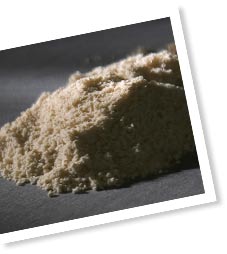Heroin
Smack/Brown/H/Horse/Junk/Harry/White lady
 What is it?
What is it?
Heroin is an addictive drug with painkilling properties processed from morphine, a naturally occurring substance from the Asian opium poppy plant. Pure heroin is a white powder. Street heroin is usually brownish white because it is diluted or "cut" with impurities, meaning each dose is different.
How is it taken?
It is usually injected but can also be snorted, smoked or inhaled.
How does it affect users?
Heroin can make users feel an initial surge of euphoria, along with a feeling of warmth and relaxation. Users also often become detached from emotional or physical distress, pain or anxiety.
What are the risks associated with heroin use?
Short-term effects include constricted pupils, nausea, vomiting, drowsiness, inability to concentrate and apathy.
Furthermore, heroin is very addictive, and development of tolerance and physical and psychological dependence occurs rapidly.
Long-term heroin use has a variety of severe health effects. Among other things, it can cause severe weight loss and malnutrition that can lead to damaged veins and liver disease. It can also lead to menstrual irregularity, sedation and chronic apathy.
Abruptly quitting heroin use leads to moderate/severe withdrawal symptoms such as cramps, diarrhea, tremors, panic, running nose, chills and sweats.
Other risks
When taking heroin, users risk taking an overdose, which can lead to coma and death through respiratory depression.
As with any illicit drug, taking heroin also clouds the user's judgment and increases the chance of him or her making bad choices, such as having unprotected sex and sharing needles. Thus, the user risks contracting HIV/AIDS, hepatitis and other infectious diseases.
Related website
Think AIDS before you start, before you shoot, before you share






